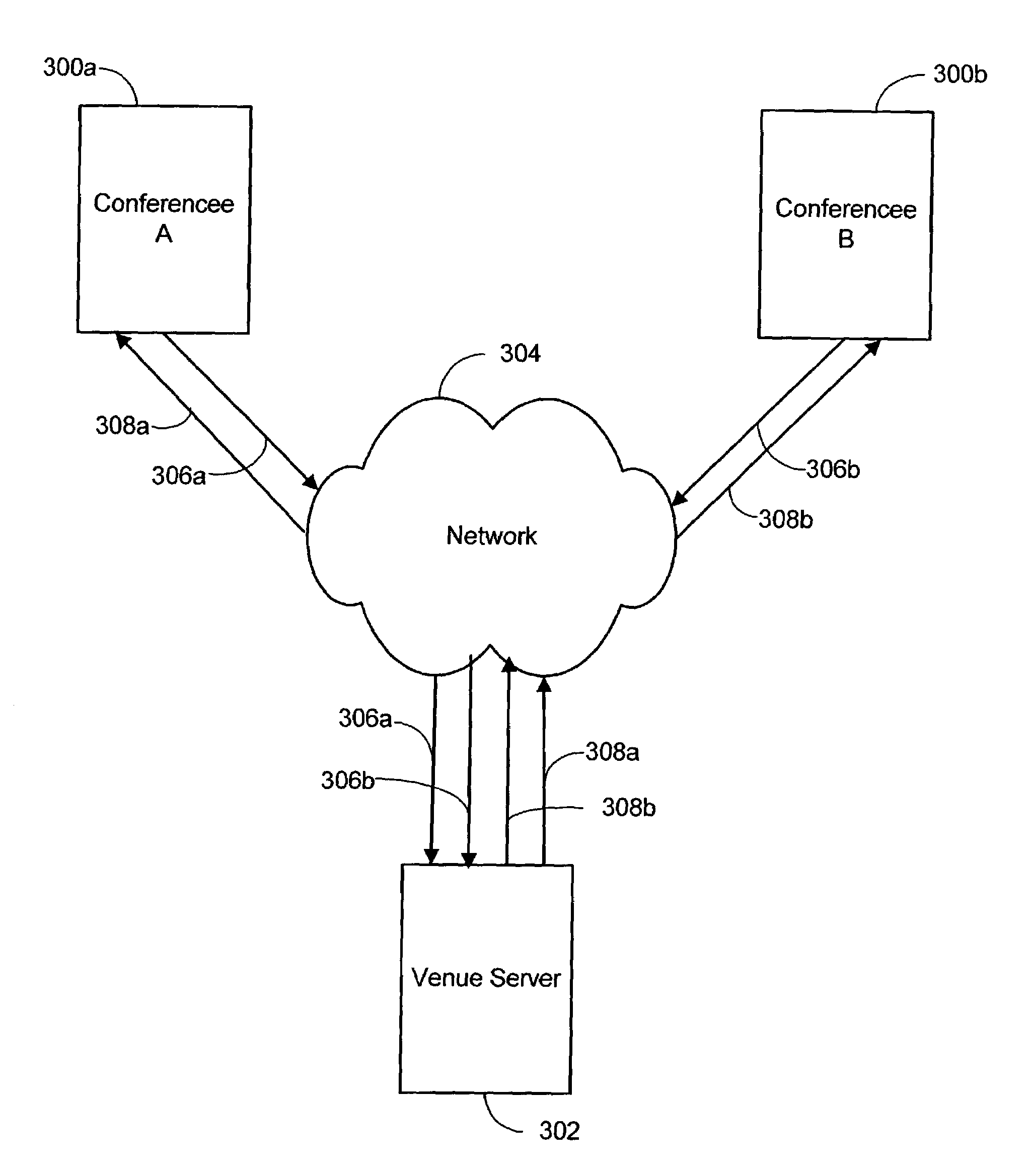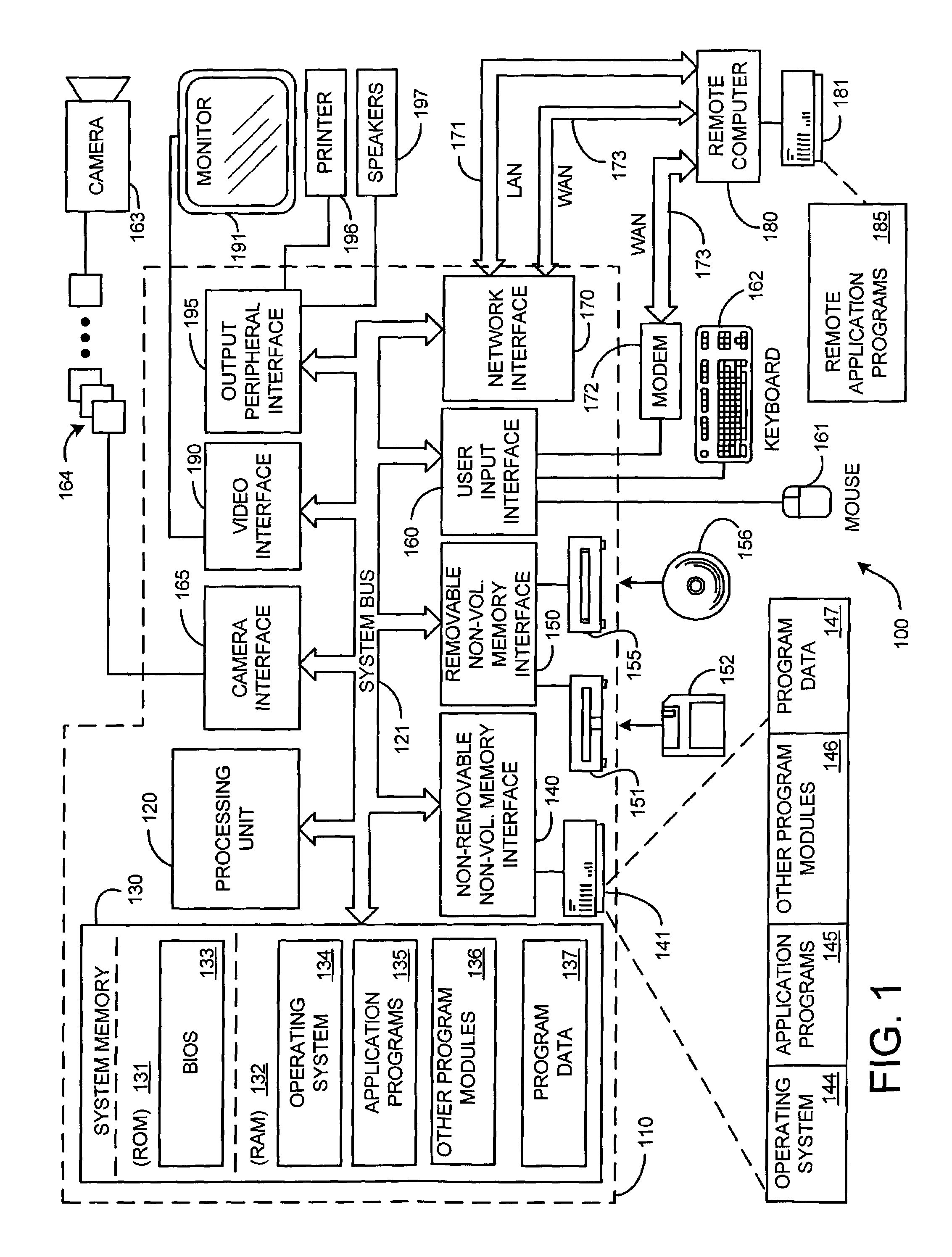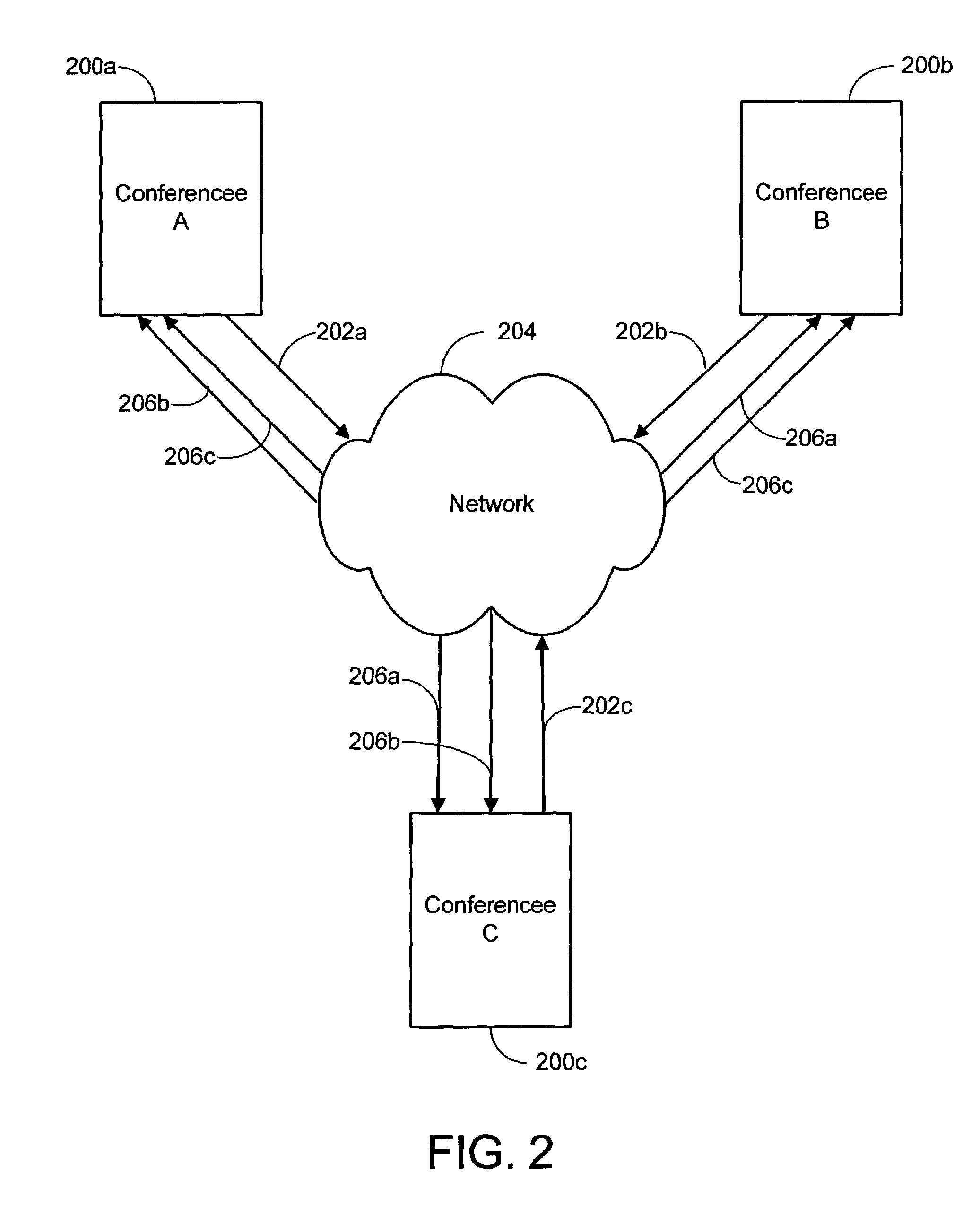[0008]The present invention is directed toward a video conferencing
system and process that provides the desired ease of use, as well as high quality, low
latency audio and video communications between the conference participants over a distributed computer network, such as
the Internet or a proprietary intranet. Essentially, each conference has a computer that has access to the network, as well as
audio equipment and a
video camera for capturing audio and video (A / V) at the conferencee's site. It is noted that a conference is defined for the purposes of the present invention as one or more people located at the same site. Thus, a conference could actually be a group of people gathered in the same physical
conference room.
[0009]In general, conducting a conference in accordance with the present conferencing system and process entails each of the conferencee's computers multicasting the audio and video data captured at the conferencee's location over the network. At the same time, each conference subscribes to audio and video data multicoated by other conferences participating in the conference. The audio and video data received by a conferences over the network from the other conferences is rendered and played by the conferencee's computer on an associated display and audio system. In this way, each conference can see and hear the other participating conferences during the conference. There are some caveats to this generally involving options where a conference can forego providing audio and / or video to the other conferences, and can elect to play or not play the audio and / or video received from the other conferences. It is noted that the multicoated data includes information identifying the particular conference providing the data. This information is used to differentiate the incoming A / V data between conferences to facilitate the rendering process
[0010]To implement the present conferencing system, a conferencee's computer is loaded with conventional
processing programs for multicasting and receiving the A / V data over the network, as well as a unique conferencing system program for orchestrating the
multicast,
receipt, rendering and playing of A / V data, as well as providing a
user interface that is employed by a conference to control their participation in a conference. In addition, as it is desired that the present conferencing system provide a substantially real time conferencing experience, high quality video with a low latency is needed. This could be achieved, for example, by employing a
digital video camera connected to a conferencee's computer via an IEEE 1394 interface. In addition, while any video codec can be used for the transfer of the video and audio data over the network, some tested versions of the present conferencing system employed M-
JPEG, MPEG-4, DivX and MSVideo codecs with success. As for the audio portion of the conference, tested versions of the conferencing system employed a high end audio system to
handle the site audio requirements that included echo cancellation,
automatic gain control and
noise reduction. In order to prevent the inevitable loss of A / V data over the network from significantly degrading the conferencing experience provided by the present invention, a layered
multicast format comprising
forward error correction layers can be employed.
[0011]Multicasting A / V data in the manner described above requires that each of the conferences obtain a
multicast address that is assigned to the conference, and then use the address in transmitting A / V data over the network. Rather than assigning a separate address to every conference that may be held, a
multicast address is associated with a venue. A venue is essentially a
virtual conference room. While it does not have any physical location, establishing venues and associating each with a unique
multicast address has a variety of advantages. First, as alluded to above, every conference scheduled for the venue would have the same
multicast address, thereby reducing the number of addresses that have to be created and maintained. In addition, a venue can be given a name, can be affiliated with particular organizations, companies, etc., and can be assigned access criteria that is used to
restrict access to authorized conferencees only.
[0014]In order to determine whether a conference is allowed access to a venue, the conference is required to provide information to the
server. This information is used to assess whether the conferences is allowed access to a venue based on the access criteria established for that venue. In one version of the conferencing system and process, the multicast addresses and venue information of only those venues the conference is allowed access to is sent to the conferencee's computer. In another version of the conferencing system and process, venue information of all the venues is provided, but the conferences can only access authorized venues. It is noted that the conference information could be pre-loaded into the conferencee's computer and provided automatically to the
server whenever the conferencing program is activated. The venue
server can also retain the conference information and provide it to another conference upon request. For example, such information as a conferencee's name, physical location,
email address and
telephone number could be retained and provided to other conferencees. While this information could be requested and exchanged directly between conferencees, obtaining it from the venue server may be more convenient.
 Login to View More
Login to View More  Login to View More
Login to View More 


